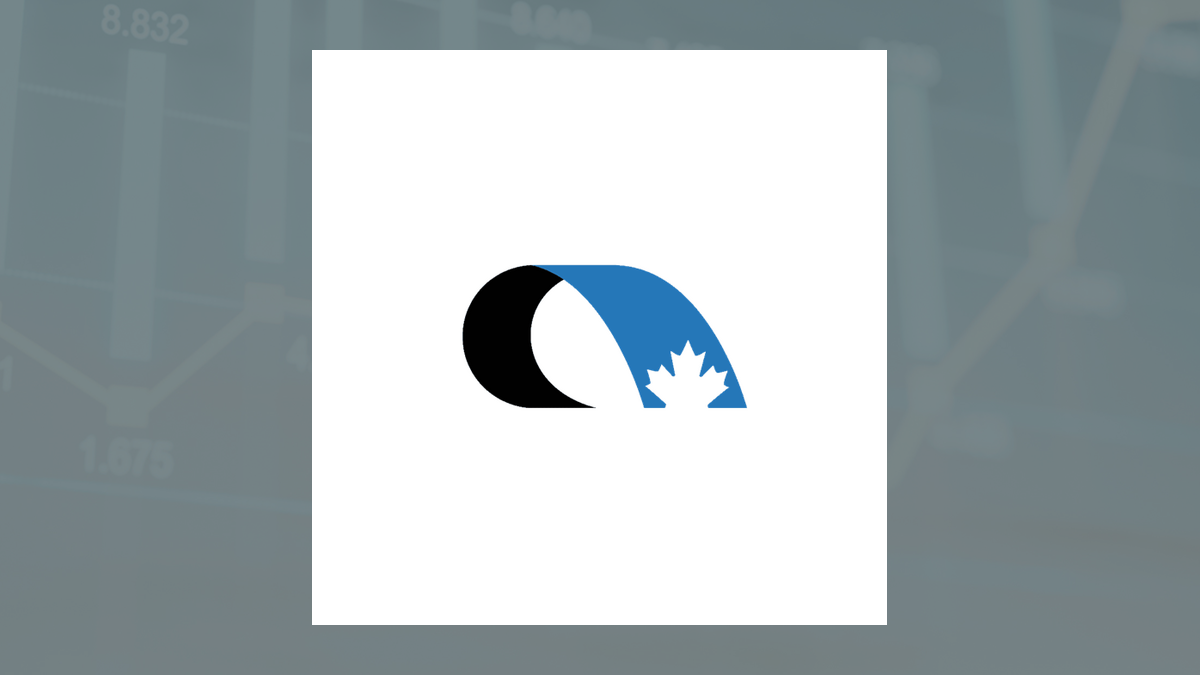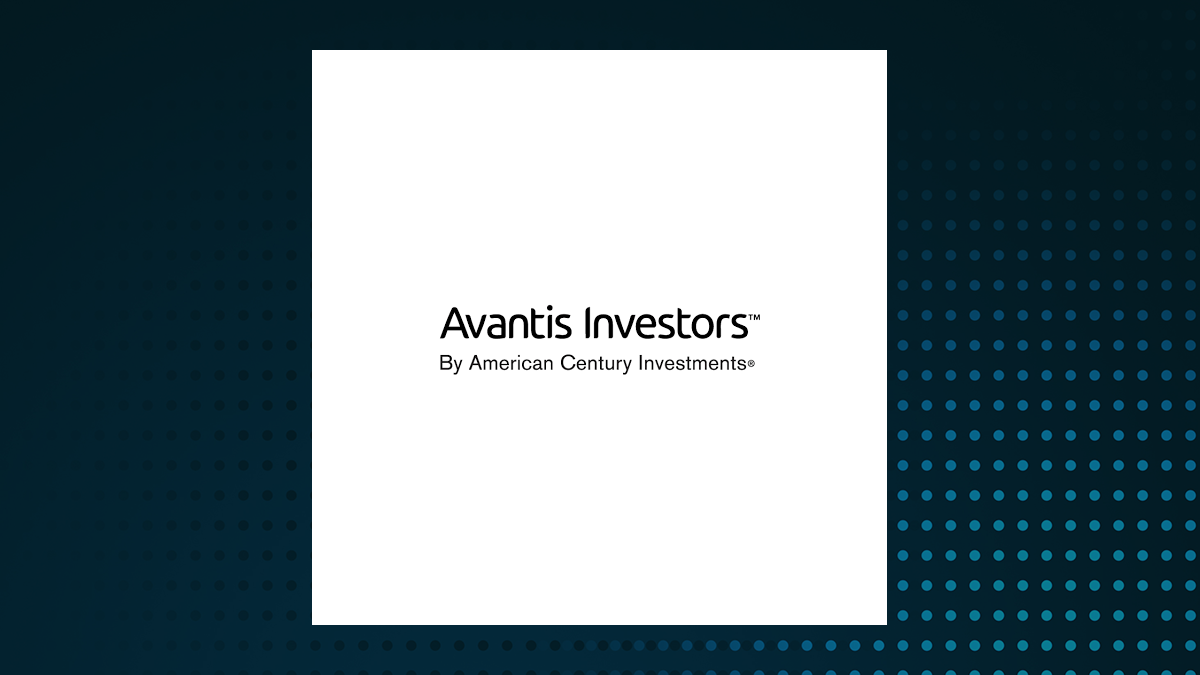
PM Images The Eaton Vance Tax-Managed Buy-Write Opportunities Fund ( NYSE: ETV ) is an interesting closed-end fund that investors can employ as a method of achieving a high level of current income from the assets in their portfolios. The fund primarily invests in common equities, which is quite nice due to the fact that they do a better job at preserving the purchasing power of an investor’s money than fixed-income securities. I explained why this might be important in a recent article , but in short, the Federal Reserve is risking a resurgence in inflation as it embarks on its expected monetary easing cycle.
As of today, inflation swaps are predicting that inflation will be at 2.34635% in one year: Federal Reserve Bank of St. Louis However, as we can clearly see from this chart, the inflation swaps market has consistently been projecting an inflation rate that ended up being substantially lower than what was actually seen during the entire post-pandemic period.

If this trend holds, we can expect that inflation will remain well above the Federal Reserve’s 2% target going forward and a reduction in interest rates will likely stimulate more inflation. After all, that is the whole goal of a monetary easing policy. Thus, it is very difficult to make an argument for buying fixed-income securities right now and investors should consider rotating into equity securities and funds.
The Eaton Vance Tax-Managed Buy-Write Opportunities Fund is one possibility, as it provides its shareholders with the purchasing power protection of equities and still manages to boast a yield that is comparable to most fixed-income funds today. The Eaton Vance Tax-Managed Buy-Write Opportunities Fund currently yields 9.08%.
Here is how that compares to its peers: Fund Name Morningstar Classification Current Yield Eaton Vance Tax-Managed Buy-Write Opportunities Fund Equity-Covered-Call Funds 9.08% BlackRock Enhanced Capital and Income Fund ( CII ) Equity-Covered-Call Funds 6.30% Columbia Seligman Premium Technology Growth Fund ( STK ) Equity-Covered-Call Funds 5.
98% First Trust Enhanced Equity Income Fund ( FFA ) Equity-Covered-Call Funds 7.17% Madison Covered Call & Equity Strategy Fund ( MCN ) Equity-Covered-Call Funds 9.81% Voya Global Advantage & Premium Opportunity Fund ( IGA ) Equity-Covered-Call Funds 10.
97% Click to enlarge As we can see here, the Eaton Vance Tax-Managed Buy-Write Opportunities Fund has a respectable yield when compared to its peers. It is not the highest-yielding fund that is currently available in its sector category, but it is still in the top half of the peer grouping. This is something that will likely appeal to potential investors as well as serve as a potential source of comfort.
This is because the fact that the fund does not have an outsized yield suggests that the market believes that the distribution is sustainable. The fact that the fund’s yield exceeds that of many of its peers means that investors do not need to sacrifice too much income by buying the fund. Thus, the overall proposition should be reasonably attractive to most income-seekers.
As regular readers may remember, we previously discussed the Eaton Vance Tax-Managed Buy-Write Opportunities Fund in August of 2023. The global equity market has been overall strong since that time, although there was a short bear market during the first few months of the interim period. There has also been some weakness in equities over the past few weeks, which appears to be caused by some data suggesting that generative artificial intelligence will not experience growth as rapid as the market previously expected, as well as fears that the United States might be in a recession currently about to enter one.
Overall, though, equity prices are up over the past year. We can therefore assume that the Eaton Vance Tax-Managed Buy-Write Opportunities Fund has delivered a reasonably satisfactory performance since we last discussed it. However, this has not really been the case.
Shares of the Eaton Vance Tax-Managed Buy-Write Opportunities Fund are only up a middling 0.23% since our previous discussion: Seeking Alpha The shares of this fund have been overall flat, but there were a few periods where they dipped by as much as 15% below their starting point before rebounding once the current market rally got started in November. That rebound was insufficient to pull the fund much above its starting point though, and overall, it underperformed the S&P 500 Index ( SP500 ) by a considerable margin.
This seems likely to reduce the overall appeal of this fund in the eyes of many investors. After all, nobody likes to underperform the market to the extent that we see here. The fact that this fund has been underperforming during the entire one-year period is doubly unattractive.
However, investors in this fund did do somewhat better than the above chart suggests. As I stated in a previous article : A simple look at the fund’s share price performance over a given period does not provide an accurate picture of how the fund’s investors have actually done. This is because closed-end funds such as the Eaton Vance Tax-Managed Buy-Write Opportunities Fund typically pay out most or all of their investment profits to the shareholders in the form of distributions.
The basic objective is to keep the portfolio’s assets at a relatively consistent level while giving the investors all of the profits earned by the portfolio. This is the reason why these funds tend to have much higher yields than anything else in the market. It also means that investors always do better than the share price performance alone would suggest, as the distribution provides a return in excess of any appreciation in the share price.
As a result of this, we should always include the fund’s distributions in any discussion of its performance. When we do this, we get this alternative to the performance chart shown above: Seeking Alpha This does reflect better on this fund overall than the first performance chart suggested. After all, we can see here that investors managed to get a 10.
63% total return over approximately a one-year period. This is generally in line with the historical average return of the S&P 500 Index. However, we can still see that the fund’s shareholders would have earned substantially more money if they had simply purchased an S&P 500 index fund instead.
Income-focused investors are frequently willing to accept a lower return in exchange for a higher yield, so this might be acceptable to some. However, those investors who are still in the process of building up their assets will likely walk away disappointed. As we will see in this article though, we would ordinarily expect a fund such as this one to underperform the market during a bull period, so the total return here is not unexpected.
As just over a year has passed since our last discussion on this fund, it is reasonable to assume that a great many things have changed. In particular, the fund’s holdings may have changed, and it has released a few updated financial reports. The remainder of this article will focus specifically on these changes and make updates to our thesis as necessary.
About The Fund According to the fund’s website , the Eaton Vance Tax-Managed Buy-Write Opportunities Fund has the primary objective of providing its investors with a high level of current income and current gains. The current gains objective makes a great deal of sense for an equity fund. After all, most stock day traders or swing investors are seeking current gains.
This simply consists of purchasing a stock that is rising in price and then selling it within a few days or months at a higher price than was paid for it. However, the current income objective does not make a whole lot of sense for any fund that invests in equities. This is because the yields on most common equities are very low.
For example, the Wall Street Journal provides the yields of the major domestic stock indices every Friday. Here are the most recent numbers: Index Current Yield Dow Jones Industrial Average ( DJI ) 2.12% Russell 2000 Index ( IWM ) 1.
51% NASDAQ 100 Index ( QQQ ) 0.84% S&P 500 Index 1.34% Click to enlarge All of these yields are substantially lower than what can be obtained from an ordinary money market fund today.
These yields are also lower than where the market expects the federal funds rate to bottom out between now and the end of 2025. The federal funds futures market is currently expecting that the Federal Reserve will reduce interest rates by 25 basis points at every meeting between now and mid-June 2025. The market then expects that the central bank will reduce interest rates by another 25 basis points during the second half of 2025, but it is uncertain when that final interest rate cut will occur.
Overall, the market expects that the federal funds rate will be at 275 to 300 basis points by the end of 2025: Chicago Mercantile Exchange While I have seen a few other analysts on Seeking Alpha suggest that the Federal Reserve will reduce interest rates even further than that, the market believes that 275 to 300 basis points is the lowest that it will go before raising interest rates again in 2026. If the market is correct, that will result in the federal funds rate remaining higher than common stock yields for the foreseeable future. Thus, fixed-income securities are a better option for achieving a high level of income than common stocks.
The overwhelming majority of closed-end funds that claim to have a current income objective will favor fixed-income securities for that reason. The fund’s website provides no insight into how this fund will achieve a current income objective despite investing in common stocks. However, the fund’s most current prospectus provides the information that we want to know: Under normal market conditions, the Fund’s investment program consists primarily of: (1) owning a diversified portfolio of common stocks, a segment of which seeks to exceed the total return performance of the S&P 500 Index and a segment of which seeks to exceed the total return performance of the NASDAQ-100 Index; and (2) selling on a continuous basis S&P 500 Index call options on at least 80% of the value of Segment One and NASDAQ-100 call options on at least 80% of the value of Segment Two.
Under normal market conditions, the Fund invests at least 80% of its total assets in a diversified portfolio of common stocks, designated segments of which seek to exceed the total return performance of the S&P 500 and the NASDAQ-100. Over time, the percentages of the Fund’s stock portfolio invested in each Segment may vary as a result of relative changes in the indices, the Adviser’s evaluation of equity market conditions and other factors. Due to tax considerations, the Fund intends to limit the overlap between its stock portfolio holdings and each of the S&P 500 and the NASDAQ-100 to less than 70% on an ongoing basis.
The Fund’s stock holdings may include stocks not included in either index. The Fund invests primarily in common stocks of U.S.
issuers. The Fund seeks to generate current earnings in part by employing an options strategy of writing (selling) index call options on the S&P 500 and NASDAQ-100. The Fund seeks to generate gains from option premiums and from the sale of equity securities it holds in Segment One and Segment Two of its portfolio.
Under normal market conditions, the Fund expects to sell on a continuous basis S&P 500 call options on at least 80% of the value of Segment One and NASDAQ-100 call options on at least 80% of the value of Segment Two. Under normal market conditions, at least 80% of the value of the fund’s total assets are subject to written call options. Writing call options involves a tradeoff between the option premiums received and reduced participation in potential future price appreciation of the Fund’s portfolio of common stocks.
We thus see that the current income objective will primarily be achieved by selling index covered call options against a portion of the fund’s holdings. This fund appears to be writing call options against a larger proportion of its portfolio than some of Eaton Vance’s other option-income funds: Fund Name % Overwritten Eaton Vance Tax-Managed Buy-Write Opportunities Fund 96% Eaton Vance Tax-Managed Buy-Write Income Fund ( ETB ) 96% Eaton Vance Tax-Managed Global Buy-Write Opportunities Fund ( ETW ) 95% Eaton Vance Tax-Managed Diversified Equity Income Fund ( ETY ) 48% Eaton Vance Tax-Managed Global Diversified Equity Income Fund ( EXG ) 48% Eaton Vance Enhanced Equity Income Fund ( EOI ) 48% Eaton Vance Enhanced Equity Income Fund II ( EOS ) 49% Eaton Vance Risk-Managed Diversified Equity Income Fund ( ETJ ) 95% Click to enlarge (all figures are as of June 30, 2024) As we can immediately see, the Eaton Vance Tax-Managed Buy-Write Opportunities Fund has the largest proportion of its assets overwritten with options than any of Eaton Vance’s option-income offerings. This tells us that the fund’s strategy will likely result in more premium income than what the other funds earn.
However, the downside to this is that the fund needs to sacrifice most or all of the potential capital gains that it would otherwise be able to earn in order to achieve this income. That certainly explains why this fund has had very minimal share price appreciation over the past year while some of Eaton Vance’s other option-income funds delivered a very strong share price appreciation. In addition, and perhaps most importantly, this means that the Eaton Vance Tax-Managed Buy-Write Opportunities Fund will not be as effective at protecting its investors against inflation as many of the other funds shown on the list.
The description of the fund’s strategy from the prospectus clearly states that the common stocks that are selected for the fund’s portfolio are ones that the fund’s management expects will outperform the S&P 500 Index as well as the NASDAQ-100 Index. This is necessary because the fund’s strategy of writing index options has one fundamental flaw from a risk-management perspective. This is that the fund is technically writing naked options, so if one of these indices increases very rapidly then the fund could face potentially unlimited losses.
The fund will usually try to buy back the option in such a situation, but there is no guarantee that it will be able to. As long as the stocks in the portfolio appreciate more rapidly than the indices, though, then the realized and unrealized gains from the stocks should be able to offset any losses from the options strategy. The fund only has 156 stocks in its portfolio currently, so it certainly is not holding the entirety of both indices.
Rather, the fund is trying to outperform the indices in an attempt to ensure that its portfolio grows at a sufficient pace to exceed any losses from the indices as well as leave it some money left over to provide it with additional capital gains. Unfortunately, in recent months, this has basically forced the fund to heavily weight a handful of common stocks. It is not exactly a secret that a very small handful of stocks were responsible for most of the gains in the stock market over the past two years.
Yahoo! Finance published a chart from Goldman Sachs last November that showed just how much influence seven technology stocks had on the S&P 500 Index: Yahoo! Finance/Goldman Sachs We can see that through November 2023, Meta Platforms ( META ), Amazon.com ( AMZN ), Apple ( AAPL ), Microsoft ( MSFT ), Alphabet ( GOOGL ), Tesla ( TSLA ), and NVIDIA ( NVDA ) were collectively up 71%, far surpassing all 493 other companies in the index. In fact, those stocks alone were responsible for more than half of the gains in the index.
We see the same thing year-to-date: Seeking Alpha The Roundhill Magnificent Seven ETF ( MAGS ) is an index fund that holds only those seven stocks. As we can see that fund outperformed the S&P 500 Index as a whole. This means that collectively, the 493 other stocks in the index underperformed the S&P 500 Index.
We actually see the same thing with the NASDAQ-100 Index, as these seven stocks have outperformed that index over the past year: Seeking Alpha This means that the other 93 stocks in the NASDAQ-100 Index underperformed the index in aggregate. This is important because it suggests that if the Eaton Vance Tax-Managed Buy-Write Opportunities Fund needs its common stock portfolio to outperform the two indices then it will almost certainly need to have a very heavy weighting to the “Magnificent Seven” technology companies. This is indeed what we see when we look at the largest positions in the fund.
Here they are: Eaton Vance We see all seven members of the “Magnificent Seven” represented here, along with Broadcom ( AVGO ), which has also been benefiting from the bubble in generative artificial intelligence. Broadcom is up 57.06% over the past year, which substantially beats both the S&P 500 and the NASDAQ-100 indices over the same period: Seeking Alpha Netflix ( NFLX ) was a significant contributor to the total return of the market prior to the COVID-19 pandemic, but it has been somewhat overshadowed by the “Magnificent Seven” since then.
The company’s common stock is still up 49.36% over the past year though, so it has also beaten the market. The fund’s holdings make sense given the fund’s strategy.
However, they also cause a problem for investors who probably have other funds in their portfolio. This problem is that due to their strong performance over the past eighteen months or so, most domestic equity funds are now boasting substantial weightings to these seven to ten companies. Indeed, regular readers will notice that we see them on just about every top ten holdings list that I have included in an article about a closed-end fund over the past two years.
As such, many investors will have a substantial proportion of their assets depending on the performance of just a few stocks. That is a rather risky proposition given the high beta that most of these companies possess. Therefore, investors will want to readjust their holdings if they choose to purchase this fund in order to ensure that they are not overly exposed to any individual common stock.
Distribution Analysis The primary objective of the Eaton Vance Tax-Managed Buy-Write Opportunities Fund is to provide its investors with a high level of current income and current gains. In accordance with this objective, the fund pays a monthly distribution of $0.0993 per share ($1.
1916 per share annually) to its shareholders. This gives the fund a 9.08% yield at the current share price, which is reasonable.
Unfortunately, the fund’s distribution history has not been particularly consistent over its history. It was not too bad over the 2013 to 2022 period, however: CEF Connect The fund cut its distribution in 2022 after years of keeping it relatively stable. As I suggested in my previous article on this fund: The distribution cut is probably due to the fund’s technology-heavy portfolio, which was a real disadvantage for it in 2022 as that sector substantially underperformed the broader market.
Regardless of the cause, the distribution cut marred the fund’s otherwise very solid record and almost certainly reduced its appeal in the minds of any investor who is seeking a stable and secure source of income to use to pay their bills or cover their expenses. The fund did manage to raise its distribution since our previous discussion, however. As we can see in the chart above, the fund raised its distribution by 4.
64% in April 2024. That is probably because the mega-cap technology companies that account for a substantial portion of the fund’s portfolio appreciated sufficiently in 2024 to allow for a larger distribution. However, it is still worth noting that the current distribution is substantially below the $0.
1108 per share monthly distribution that the fund was consistently paying prior to the 2022 cut. Naturally, though, new investors are not affected by the fund’s past disappointments and will only be affected by what the fund does in the future. As such, we should have a look at its distribution coverage today in order to determine how well it can sustain the payout going forward.
As of the time of writing, the most recent financial report that is available for the Eaton Vance Tax-Managed Buy-Write Opportunities Fund is the semi-annual report for the six-month period that ended on June 30, 2024. This is obviously a much newer financial report than the one that was available the last time that we discussed this fund, so it should work pretty well to provide an update on the fund’s financial performance and position. For the six-month period that ended on June 30, 2024, the Eaton Vance Tax-Managed Buy-Write Opportunities Fund received $10,404,229 in dividends from the assets in its portfolio.
Strangely, this fund received nothing in interest or any other sources during the period, so its total investment income is also $10,404,229 for the period. The fund paid its expenses out of this amount, which left it with $1,781,324 available for shareholders. That was not sufficient to cover the $68,021,211 that the fund paid out in distributions over the period.
Fortunately, the fund was able to make up the difference through capital gains. For the six-month period that ended on June 30, 2024, the Eaton Vance Tax-Managed Buy-Write Opportunities Fund reported net realized gains of $51,558,773 and net unrealized gains of $136,647,431. Overall, the fund’s net asset value increased by $121,966,317 after accounting for all inflows and outflows during the period.
Thus, the Eaton Vance Tax-Managed Buy-Write Opportunities Fund managed to fully cover all of the distributions that it paid during the period. However, it had to rely on its unrealized capital gains to do so, which might be concerning. The fund’s excess gains in this case though were still enough to cover another six months of distributions with a lot of money left over.
Due to the sheer size of the excess returns, we probably do not need to worry too much about a market correction negatively impacting the fund’s ability to cover its distributions. This fund should be in pretty good shape for quite a while. Valuation Shares of the Eaton Vance Tax-Managed Buy-Write Opportunities Fund are currently trading at a 6.
48% discount on net asset value. This is a much more attractive price than the 4.62% discount that the shares have had on average over the past month.
Conclusion In conclusion, the Eaton Vance Tax-Managed Buy-Write Opportunities Fund is a reasonable way for investors to obtain a high level of income without the need to purchase fixed-income securities. That could offer some advantages due to the fact that equities tend to do a better job of protecting wealth against inflation. However, this fund might not do as well as some of Eaton Vance’s other option-income funds in this respect due largely to its very high level of overwritten options.
The fund’s 9.08% yield is fully covered, and its valuation is decent. The only real concern here is that the fund’s assets are highly focused on only a handful of technology companies, which could be a problem if an investor does not actively manage their portfolio’s concentration risk in order to achieve proper diversification.
At Energy Profits in Dividends, we seek to generate a 7%+ income yield by investing in a portfolio of energy stocks while minimizing our risk of principal loss. By subscribing, you will get access to our best ideas earlier than they are released to the general public (and many of them are not released at all) as well as far more in-depth research than we make available to everybody. In addition, all subscribers can read any of my work without a subscription to Seeking Alpha Premium! We are currently offering a two-week free trial for the service, so check us out ! Power Hedge has been covering both traditional and renewable energy since 2010.
He targets primarily international companies of all sizes that hold a competitive advantage and pay dividends with strong yields. Energy Profits in Dividends Learn more Analyst’s Disclosure: I/we have no stock, option or similar derivative position in any of the companies mentioned, and no plans to initiate any such positions within the next 72 hours. I wrote this article myself, and it expresses my own opinions.
I am not receiving compensation for it (other than from Seeking Alpha). I have no business relationship with any company whose stock is mentioned in this article. Seeking Alpha's Disclosure: Past performance is no guarantee of future results.
No recommendation or advice is being given as to whether any investment is suitable for a particular investor. Any views or opinions expressed above may not reflect those of Seeking Alpha as a whole. Seeking Alpha is not a licensed securities dealer, broker or US investment adviser or investment bank.
Our analysts are third party authors that include both professional investors and individual investors who may not be licensed or certified by any institute or regulatory body..














